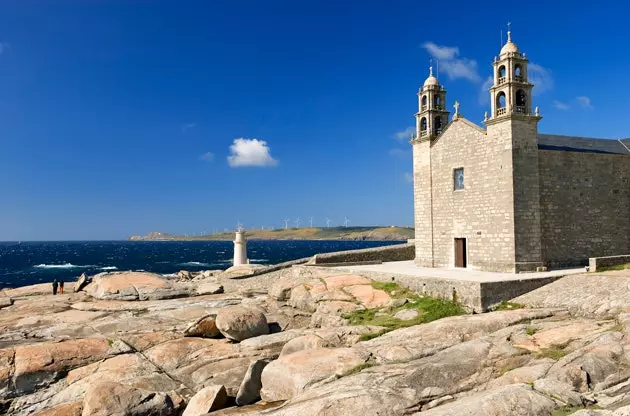
Virgin of the Boat, Muxía
VIRGIN OF THE BARCA, MUXÍA
Neither Romanization nor Christianization managed to put an end to the primitive cults that worshiped nature and its elements. In fact, Christianity, instead of fighting them directly, opted on many occasions for the expeditious method of place a cross or a virgin on the old places of worship and thus transform devotion to a rock, a spring or a forest into something more orthodox.
A) Yes, the church of the Virgen da Barca in Muxía tinges with respectability the eminently pagan cult of the rocks next to which it is located, the "balancing stone" and the “two cadris stone” , to which are attributed healing, divinatory, or wish-granting abilities . It is a place that has been considered sacred or magical since the first settlers arrived and settled there; the cult changes but the rock remains.
AXEITOS DOLMEN
The official theory tells us that dolmens were burial places , but it is difficult not to become mystical and attribute more uses to it, perhaps druidic , when visiting it. Its reasonably good conservation, its location in a forest in one of the areas with the highest concentration of "magical" enclaves, its resemblance to other stone constructions, such as standing stones and cromlechs from all over Europe , and its antiquity, around the year 4000 before Christ, makes this megalith of Riveira one of the most emblematic places in Galicia.
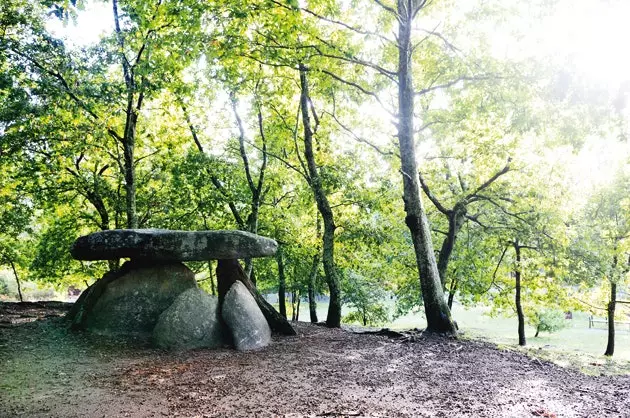
Dolmen of Axeitos
THE STONE OF PADRON
The name of the town that baptizes the most famous peppers in Galicia comes from a tradition that connects directly with the nearby Santiago de Compostela . According to legend, when the stone boat (sic) of the Apostle arrived at the Galician coast, it was tied to this stone, which automatically turned it into a relic. The version of historians today identifies it with a roman altar in which a clearly visible inscription that has little to do with the saint; is created in either version, you will be surprised to find the pedrón in the Church of Santiago of the locality , under the white tablecloth of the main altar.
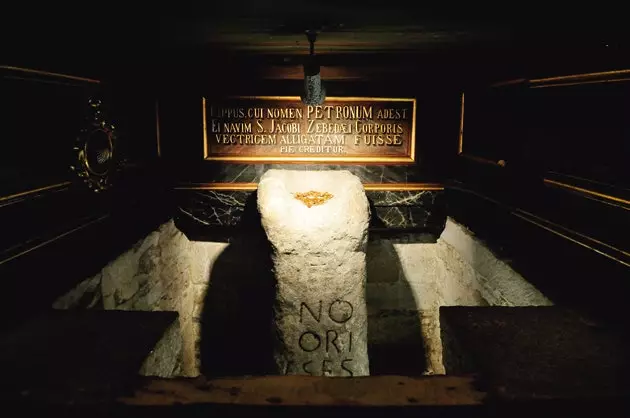
The 'Pedrón' of Padrón
SAINT PETER OF ROCKS
We are crazy about those places where architecture and nature intermingle and this is the perfect example (so perfect that it was about to become a ruin devoured by the forest as a result of abandonment). Here we find a monastery built at the dawn of the Middle Ages on and around a rock that immediately refers to primitive Christianity, to hermits who prayed in solitude and to literally enter the earth to achieve a greater connection with our spiritual part. Their anthropomorphic graves Y the silhouette of its bell tower crowning the rock they are hard to forget. Of course, there is no shortage of references to the fact that it was a place of worship prior to Christianization, which makes it one of the most evocative points of the already very evocative and poetic Ribeira sacra Ourense.
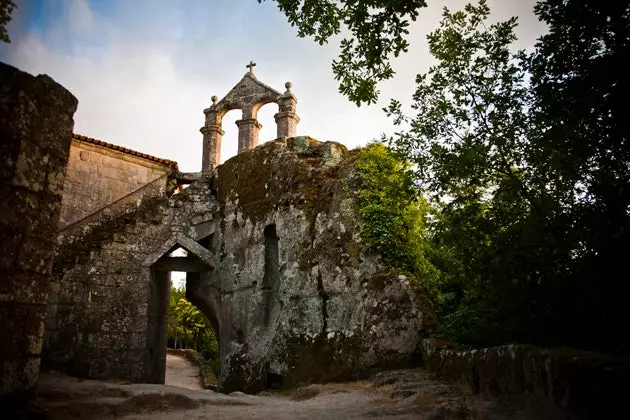
Monastery of San Pedro de Rocas
PETROGLYPH OF MOGOR
There are many stone drawings throughout Galicia; in Campolameiro, in the same province of Pontevedra, there is one of the most important groups of cave art in all of Europe, but the mogor petroglyph It has greater esoteric importance for representing a labyrinth, one of the oldest and most present symbols throughout history. Four thousand years ago these designs were drawn with a meaning yet to be unraveled; a walk on the rocks from nearby Mogor beach invites us to speculate on whether it was a solar calendar, an astronomical route, a place of worship for the dead or a mere territorial mark.
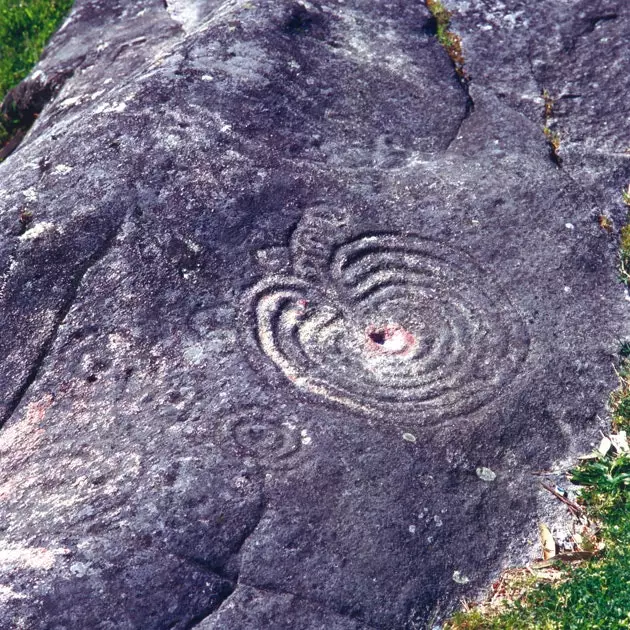
The mysterious petroglyph of Mogor
NOIA
In this small town near Santiago legends pile up , from those that attribute its foundation to Noah himself, the tradition that says that the land of his cemetery was brought directly from ** Palestine ** (holy land, never better said) Knights Templar or even the most contemporary curse of the Church of San Martino (highly publicized in Millennium III and Fourth Millennium). Easier to examine than these stories are the stones of the precious church of Santa Maria a Nova , with its initiatory symbols such as the knight who kills a snake or his guild tombstones , in which the stone engravings (scissors, compass, needle...) identified the profession of the deceased and speak to us today, more than five centuries later, of the composition of the town's society.
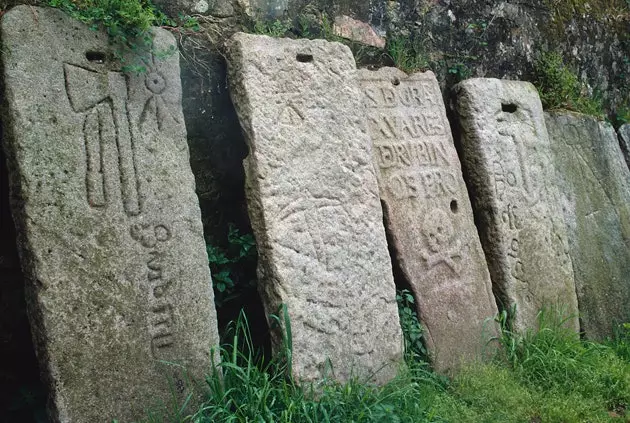
Guild tombstones of Noia
MOUNT PINDO
The presence of the Celts in Galicia is more than debatable, but this mountain in the vicinity of Carnota has been given the nickname of "Celtic Olympus" that identifies it as the highest sacred place, if not for the Celts, then for Galician intellectuals from the 18th century onwards. Legends of disappeared castles, megaliths and caves to which hidden meanings are attributed and a more tangible exploitation of tungsten from the Second World War crown its impressive views of one of the best Galician beaches.
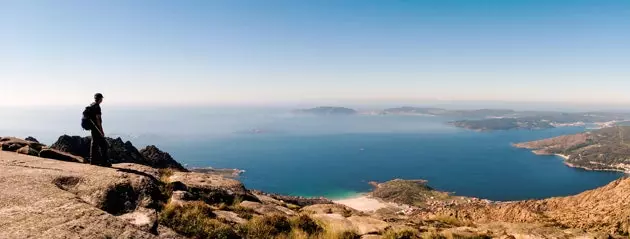
Mount Pindus
SAN ANDRES DE TEIXIDO
Is white church of the Sierra de A Capelada It is a famous place of pilgrimage throughout Galicia because the people, very far-sighted, know that if they do not leave in life we will have to go three times of death . In the surroundings of the church it was forbidden to kill any animal because they could be the reincarnation of some unsuspecting person who had not made a pilgrimage to San Andrés in life. Yes, reincarnation and catholicism united in a curious alliance in this magical place. Also your bread figurines they are a souvenir to claim and the vertiginous cliffs on which the church is located can look at their Irish and Norwegian companions face to face.
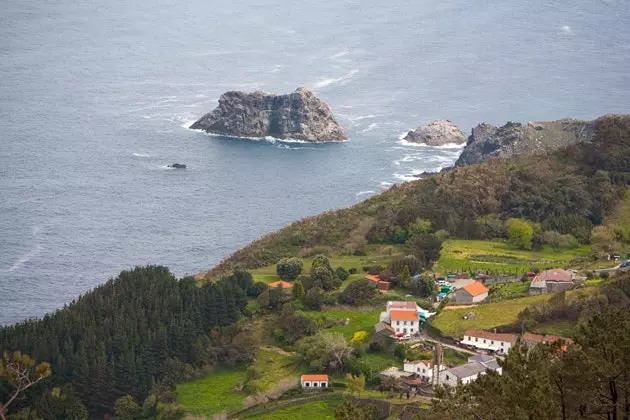
San Andrés de Teixido: reincarnations, Catholicism and figures of bread
SANTA TEGRA FORT
Of the numerous samples of the castro culture in Galicia (previous and then contemporary culture to the Romanization whose inhabitants lived in castros, stone constructions) Holy button It is one of the best preserved examples. Its spectacular situation stands out, overlooking Portugal, the mouth of the Miño and the ocean . Walking through its round houses it is easy to feel half archaeologist half character from Asterix by identifying cave engravings on the walls of buildings.
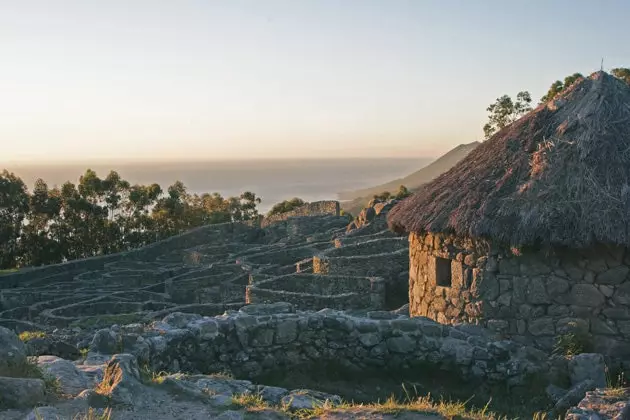
Castro of Santa Tegra
SANCTUARY OF THE APPARITIONS
The stories that raise the eyebrows of the most skeptical do not always go back centuries or are linked to Knights Templar and Rosicrucians . Sometimes they are less than a hundred years old and come with the seal of approval of Catholic orthodoxy, as in the case of the visions that Lucia, the only one of the children of Fatima who reached adulthood, had in a convent in Pontevedra . As she herself recounted, in the 1920s, when she lived in a Dorotea convent in the historic center of the city, the virgin appeared to him on several occasions to communicate her desire for reparation towards her sacred heart on the first Saturdays of the month. A painting commemorates her appearance in which she was her cell in a curious building halfway between a convent and a contemporary house that has a privileged place in one of the mysteries recognized by the Catholic Church , with prophecies included, of our time.
*** You may also be interested in...**
- And a bagpipe! Definitive route through the Celtic destinations
- The most beautiful villages in Galicia
- Squares where to procrastinate in Galicia
- What to eat in Galicia in summer
- Five things to eat in Galicia (and they are not seafood)
- Galifornia: reasonable resemblances between the two west coasts
- Everything you need to know about Galicia
- The route of the mystery of Madrid
- When morbidity moves tourism (I)
- When morbidity moves tourism (II)
- Interview with Iker Jimenez
- Interview with Carmen Porter
- All the articles of Raquel Piñeiro
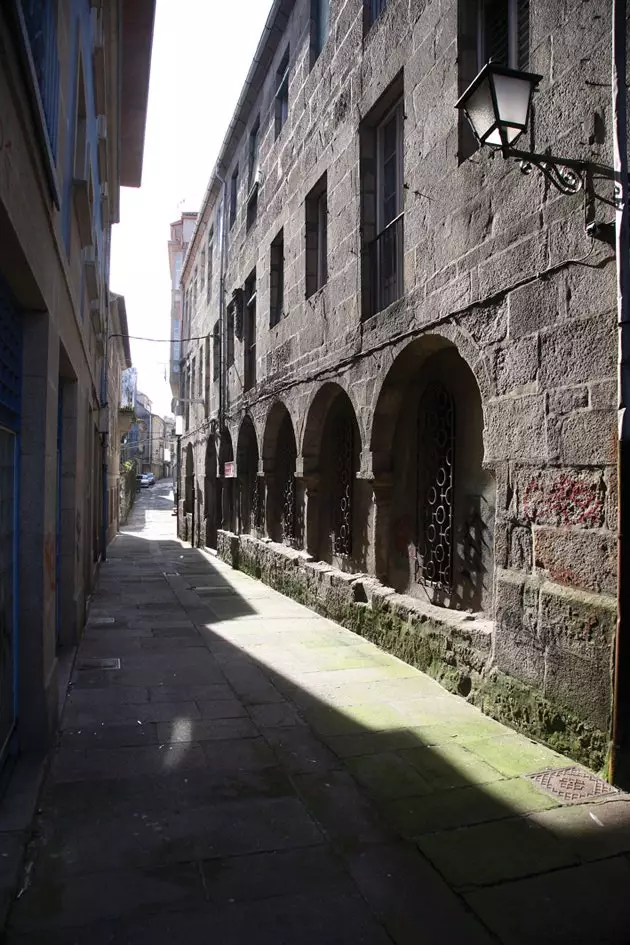
Shrine of the Apparitions
